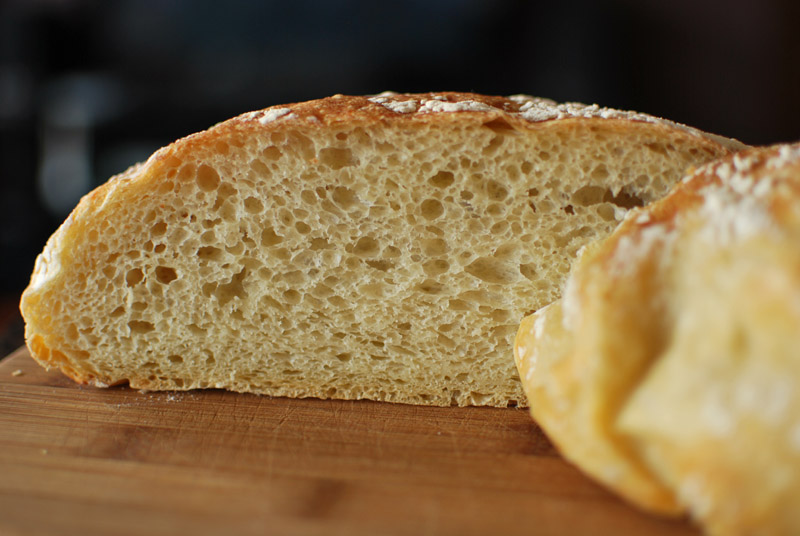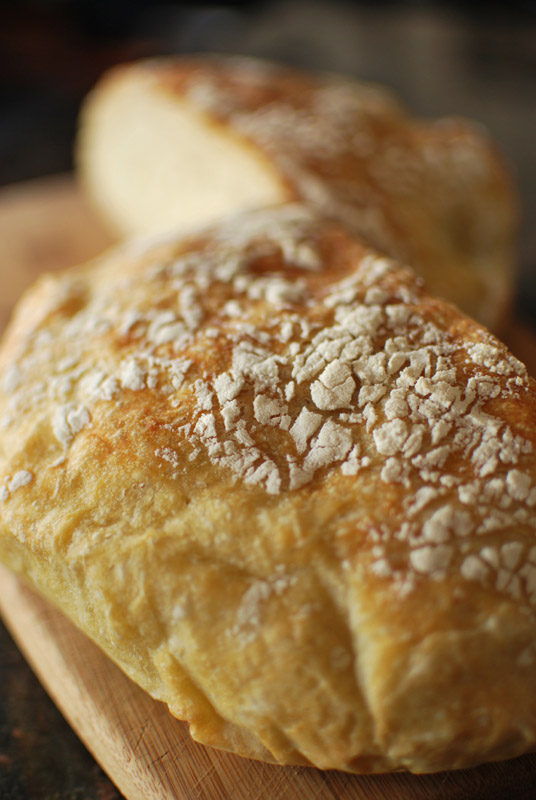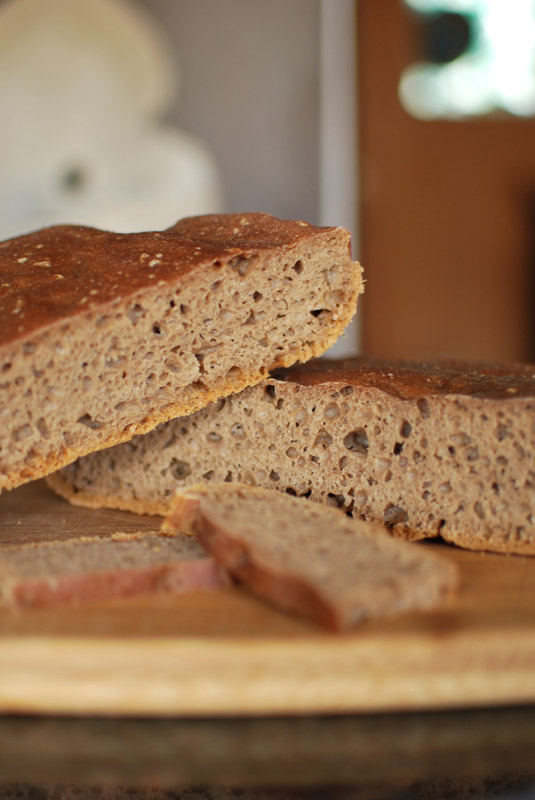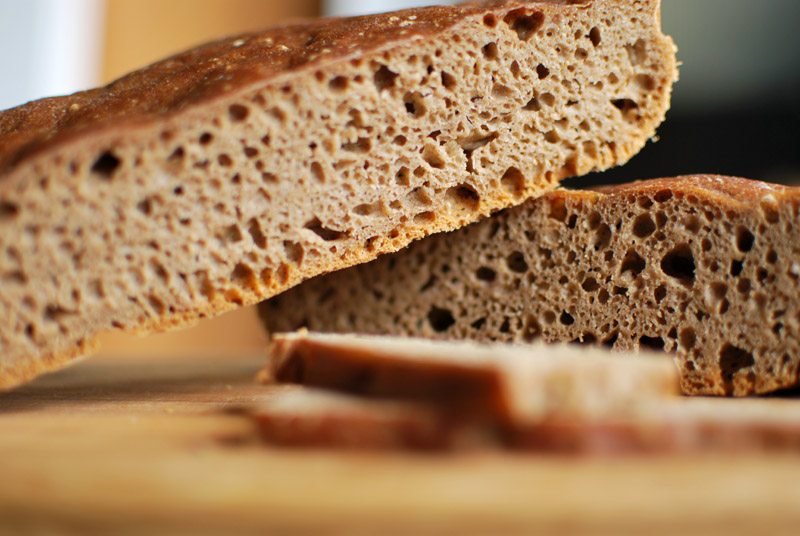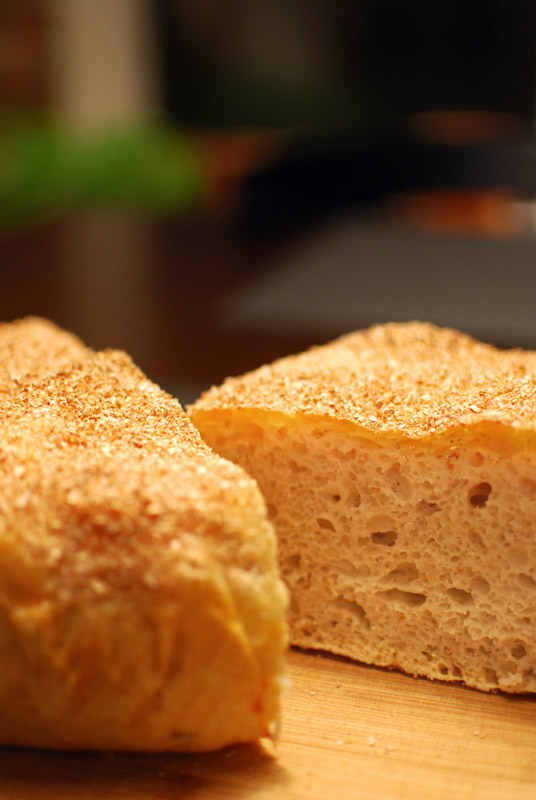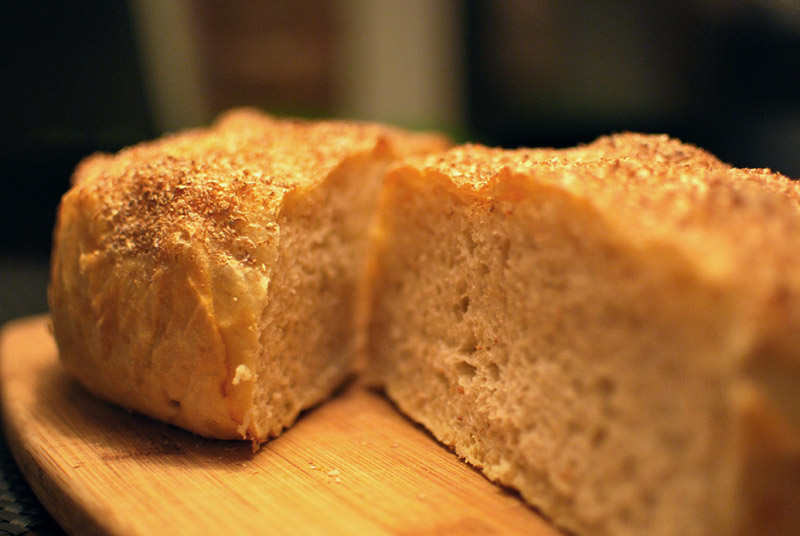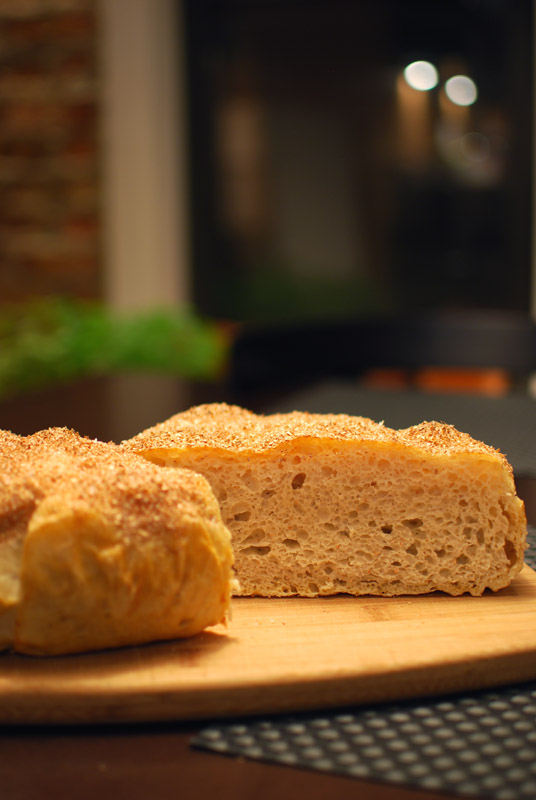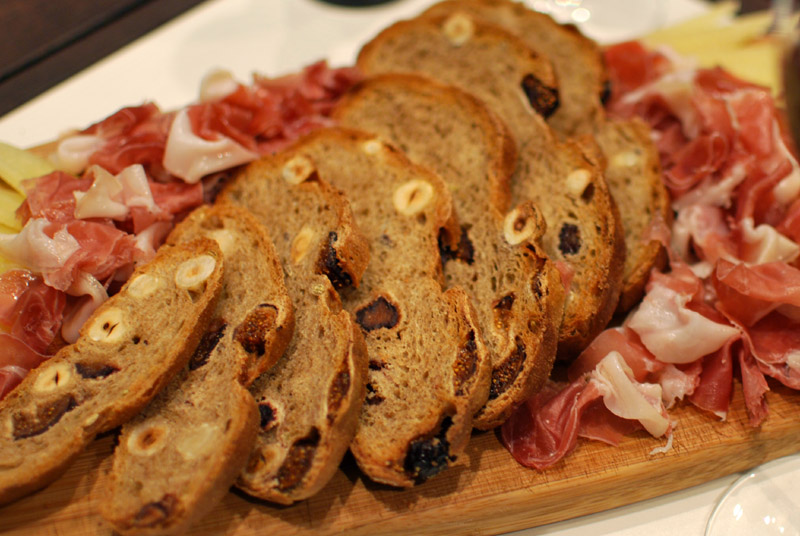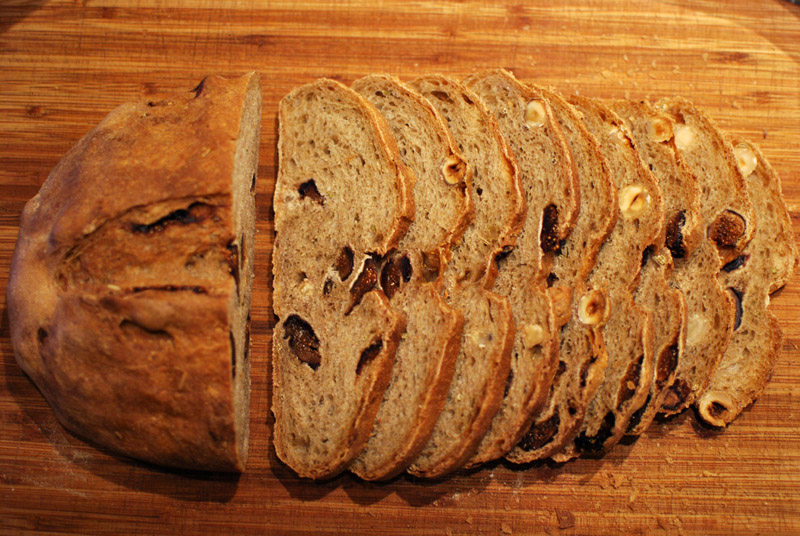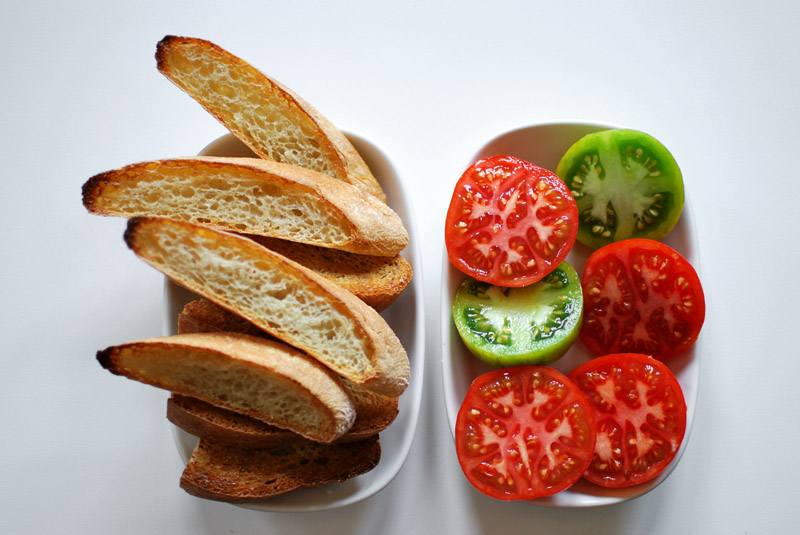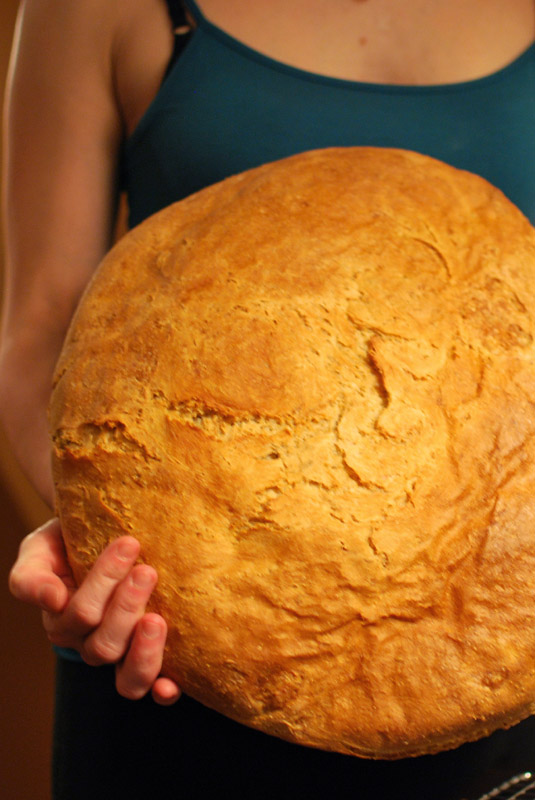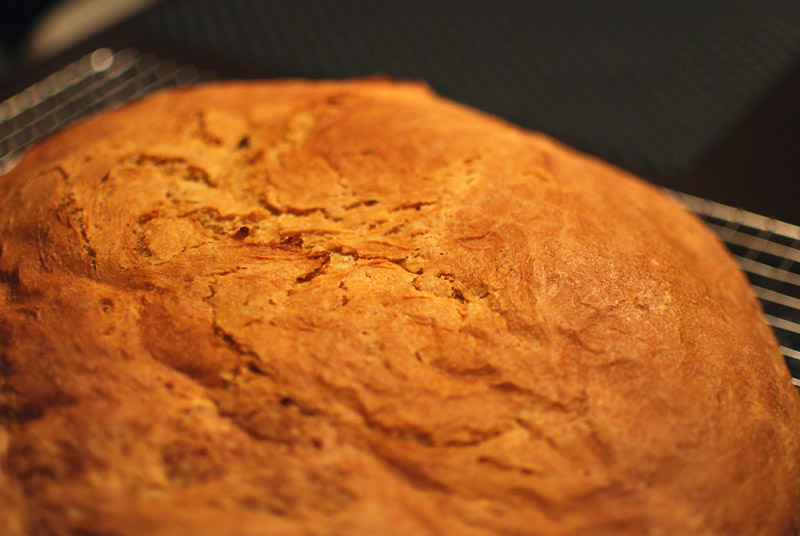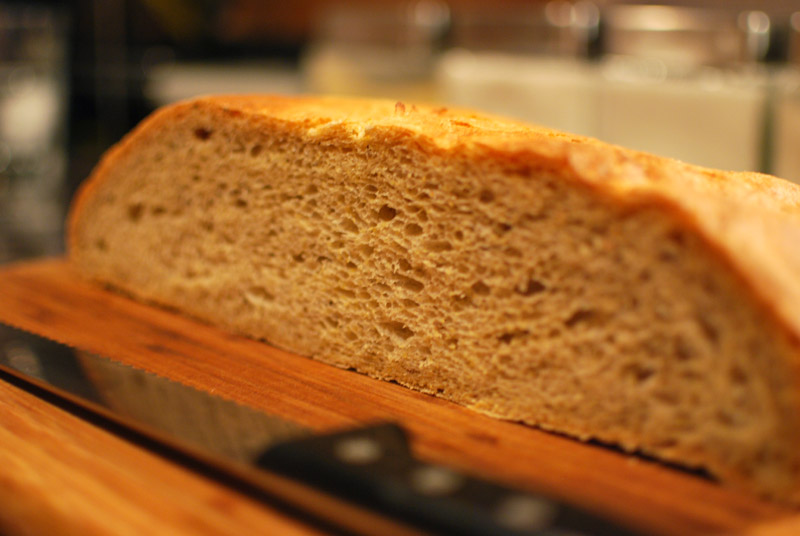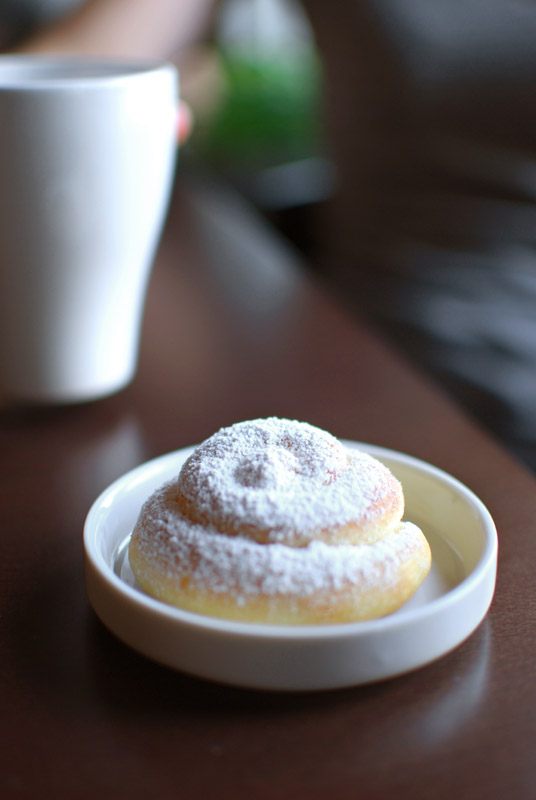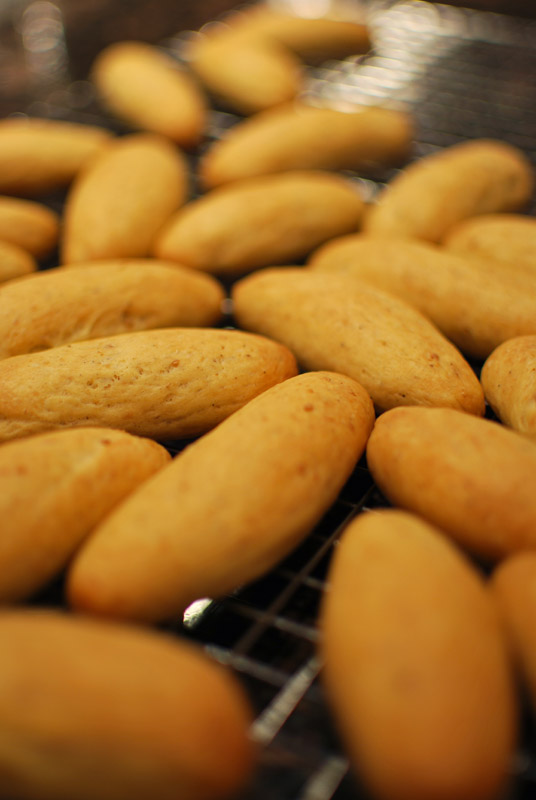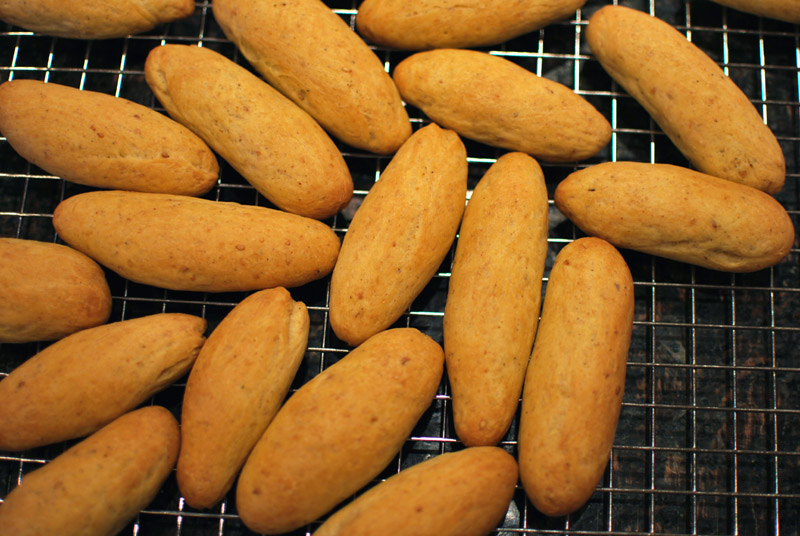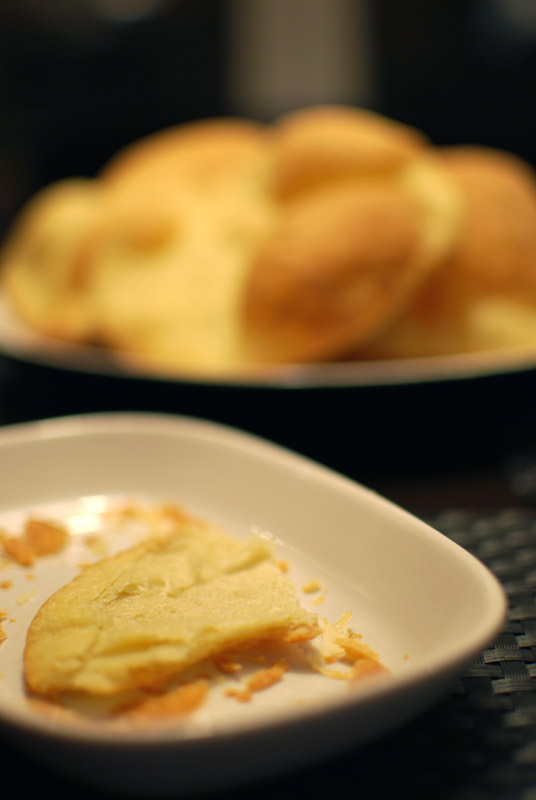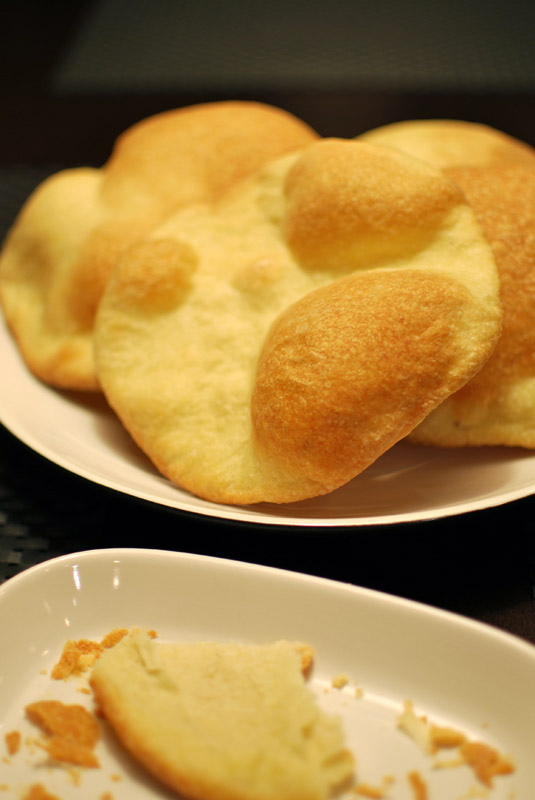Week Thirty-Seven: Viennoiserie
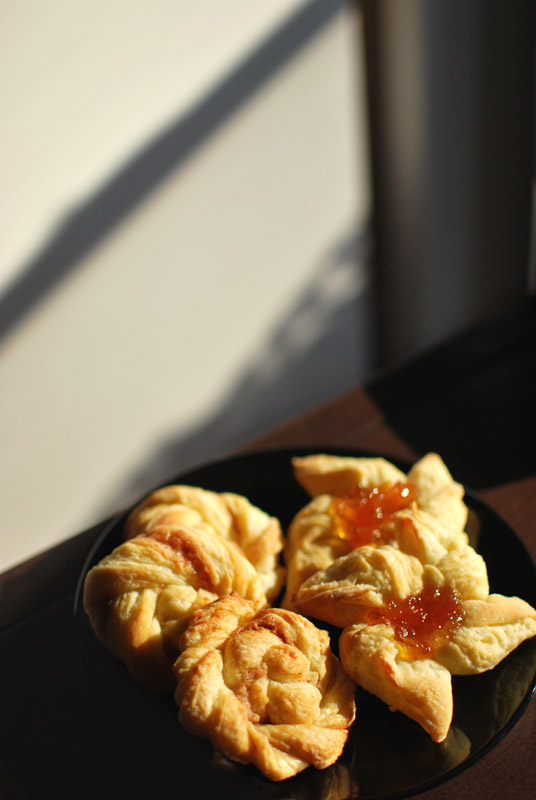
In the morning, before the thundering traffic tide rolls in, a million underpaid hotel workers set up the Continental breakfast buffet. Complimentary, of course. All the regulars are there: purple-hued blueberry muffins, tops slicked over like some 50’s greaser sterotype; pre-split and pre-dried-out bagels next to a cheap toaster, keeping a protective eye over their individually-wrapped cream cheese babies; if you’re lucky, there’s scrambled eggs being slowly cooked to death over a hotel pan full of steaming water; and then the Danish, glistening like jewels under apricot glaze, beckoning with fillings of ivory cream cheese or the incarnadine gloss of an unspecified fruit, draped with white veils of icing.
Lured by the scent of a million coffee pots, pressed by the demands of business conferences or flights to catch, hotel guests shuffle in. Since they, like humans do, eat first with their eyes, is it any wonder the Danish disappear before anything else? They might be as tasteless as dust, or as over-sweet as cotton candy, but oh my goodness!, don’t they look shiny!
Too often, the Danish we encounter are such forlorn-tasting creatures as these, giving a bad name to the authentic ones in the world. However, it’s easy to understand why so many lesser Danish exist, as fussy as it is to do them properly. There is first the dough, which must be carefully laminated with butter, a time-consuming multi-step process of folding and rolling. Then, any fillings such as pastry cream, fruit fillings, cream cheese filling, etc. must be made. And finally, the pastries themselves must be cut out precisely, filled, shaped, risen, baked, and glazed.
The reward for all this effort is a veritable mountain of flaky, sparkling Danish, slightly less light than a croissant, and far more indulgent. The edges crisp in the oven, giving a crunch that contrasts to the more tender interior, and fall apart in a shower of broad, flat crumbs. Depending on the shape of the pastry – which are innumerable – you can get more crunchy exterior, or more soft crumb, or more filling, depending on personal preference. Fillings, depending on type, ooze out slowly as you bite, drip down like honey as you tilt, or shatter off in miniature explosions.
Danish dough is made in a similar fashion to a croissant, but the dough (pre-lamination) is far richer. Fillings, which run the gamut from a simple cinnamon-sugar to nuts to pastry cream and fresh fruit, and everything in between, tend to be sweet and moist. A drizzle of white icing ribboned over the top is quite pretty and common, but can often be an unnecessary further gilding of the lily.
I’ve decided to make two very basic Danishes today, with fillings that require no further work than stirring sugar into cinnamon. Pastry cream is not very difficult, and is awfully delicious wrapped up in a toasty bit of Danish pastry; but after making this dough, you’ll be ready to sit down and not have too cook anymore.
The first, called a “snail” or “spiral”, is a classic pastry, and uses thin strips of dough layered with a sprinkling of cinnamon-sugar, twisted, then spiralled around itself. Quick, attractive, and delicious, they’re an easy way to use up any rough edges you may have trimmed in order to make the second pastry: a pinwheel. They look just like you think they would, and are surprisingly easy to make. These, I’ve simply filled with an orange marmalade, but are most often done with pastry cream and fresh fruit.
Danish dough can be used for nearly any type of pastry: turnovers, bear claws, cinnamon rolls, sticky buns, figure-eights, braids, wreaths, anything your imagination can think up. Fillings, of course, can be as simple as you like or as elaborate and eye-rolling as you like.
You may notice the dull lustre of my Danish. This was because after rolling, folding, waiting, rolling, shaping, filling, baking, and photographing all those pastries, the thought of glazing the little darlings totally slipped my mind. Glazing is what gives Danish their characteristic shine, and is a very easy step. They taste very nearly the same, however, glazed or not; it’s up to you to decide if you’re up to the challenge. I must warn you, though, that with a cooling rack full of Danish glimmering at you like the top of the Chrysler Building, you may not be able to resist their charms. Don’t set a plate of them out unless you want them gone in minutes. Take it from one who knows.
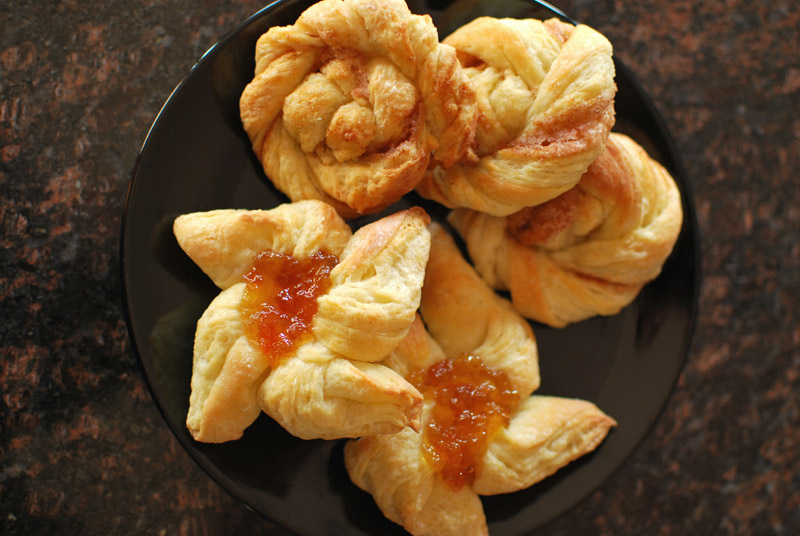
Danish Pastry Dough
Adapted from Professional Baking, by Wayne Gisslen
Makes enough dough for about 24 snails and 15 pinwheels
For dough:
1 1/4 cups milk, at room temperature
1 large egg + 1 yolk
3 tablespoons butter, melted and cooled slightly
24 ounces (about 5 cups) unbleached bread flour
3 tablespoons sugar
4 teaspoons instant yeast
2 teaspoons salt
1 pound butter, slightly softened, for rolling in
For snail fillings:
Melted butter, for brushing
1/4 cup granulated sugar
1/2 teaspoon ground cinnamon
For pinwheel fillings:
1/2 cup orange marmalade
1 egg yolk, beaten with 1 tablespoon milk, to make an egg wash
Apricot or clear glaze, recipes below
1. In the bowl of a stand mixer, whisk together the milk, egg, yolk, and melted butter. Whisk together the flour, sugar, yeast, and salt, and add to the wet ingredients in the mixer.
2. Using the dough hook at low speed, mix until all the flour is moistened, scraping the bowl as needed. Knead for about 2 minutes at low speed, or until smooth.
3. Transfer the dough to a large, lightly-oiled bowl. Cover tightly with plastic wrap, and let rest at room temperature for 30 to 45 minutes, or until risen and puffy (not necessarily doubled in size).
4. Punch the dough down in the bowl, deflating it. Cover tightly with plastic wrap, and refrigerate for 45 minutes. Thirty minutes before laminating with butter, remove the butter from the refrigerator. It should be slightly soft, but not squishy.
5. Turn the dough out onto a lightly floured surface. Roll the dough out to a large rectangle 1/2 inch thick, dusting with flour as necessary, and lifting and stretching (especially in corners) until it’s the proper size. Turn (spin) the dough occasionally to make sure it isn’t sticking. If the dough resists, cover with plastic wrap and let rest for 10 minutes, then try again.
6. Gently spread the softened butter over the right 2/3 of the dough, taking care not to tear the dough. Fold the dough over the butter as you would fold a letter: the left, un-buttered third of dough over the butter, then the right, buttered third over the dough. Brush any excess flour off with a pastry brush.
7. Turn the dough so that a short side is nearest you, then flatten dough slightly by pressing down horizontally with rolling pin across dough at regular intervals. Roll out the dough into a rectangle, rolling just to but not over the ends, trying to keep it as square as possible.
8. Brush off any excess flour with a pastry brush. Fold the dough in thirds like a letter, as before, lifting and stretching the corners to square off dough, forming a rectangle. This is the first fold. Chill the dough, wrapped in plastic wrap, for 30 minutes.
9. Make 2 more folds in same manner as in steps 7 and 8, chilling the dough (wrapped) for 30 minutes after each fold, for a total of 3 folds (see note 1 below). If any butter oozes out while rolling, sprinkle with flour to prevent sticking. Wrap the dough loosely but totally in plastic wrap and chill for at least 1 hour but no more than 18 (after 18 hours, dough may not rise sufficiently when baked).
10. Preheat the oven to 350º F. Lightly grease two large baking sheets, or line with parchment paper or a silicone mat. Cut the dough in half and chill one piece, wrapped in plastic wrap. Roll out the other half on a lightly floured surface, dusting with flour as necessary and stretching the corners to maintain its shape, into a 16 x 12 inch rectangle. Brush off any excess flour with a pastry brush. Place the dough so that a long side is nearest you.
11. For snails, mix the sugar and cinnamon together. Brush the dough with melted butter. Sprinkle the cinnamon-sugar over the half of the dough that is closest to you (dividing the dough in half lengthwise). Fold the un-sugared half over the sugared half, and roll lightly to press the layers together.
12. Using a pizza wheel, or a sharp knife (taking care to cut straight down, not dragging the knife, which will prevent the dough from rising properly along the edges), cut the dough vertically (lines perpendicular to you) into thin strips less than 1/2 inch wide.
13. Twist each strip several times, stretching a little as you twist, then curl it around itself into a spiral. Transfer to one prepared baking sheet, tucking the tail end underneath. Repeat with remaining strips. Cover loosely with plastic wrap, and let rise at room temperature for about 20 minutes, or until slightly risen and puffy.
14. To make pinwheels, roll out the remaining dough on a lightly floured surface, dusting with flour as necessary and stretching the corners to maintain its shape, into a rectangle about 1/2 inch thick. Brush off any excess flour with a pastry brush. Place the dough so that a long side is nearest you.
15. Using a pizza wheel, or a sharp knife (taking care to cut straight down, not dragging the knife, which will prevent the dough from rising properly along the edges), trim the edges of the dough so that it is reasonably squared and straight. Cut the dough into even squares (I was able to get 15, but I rolled mine fairly thin).
16. Working with one square at a time, make a cut from each corner towards the center of the square. Do not join the cuts; it should now look like a Florian cross. Brush the top lightly with egg wash (when finished, cover and chill the egg wash to use later). Fold alternating corner flaps into the center to make the pinwheel shape, pressing firmly to seal. Repeat with the remaining squares. Cover loosely with plastic wrap, and let rise at room temperature for about 20 minutes, or until slightly risen and puffy.
17. When pinwheels are risen, make an indentation in the center of each by pressing firmly with a floured fingertip. Place about 1 teaspoon of orange marmalade in each indentation. Lightly brush the pastry with egg wash, being careful not to deflate it.
18. For snails and pinwheels both, bake at 350º F for 15 to 20 minutes, or until just golden brown. Remove from the oven, and brush immediately with warm apricot glaze or warm clear glaze. Let cool briefly on the pan, about 3 to 4 minutes, then remove to a wire rack to cool thoroughly. Serve warm.
Apricot Glaze
Makes 1/2 cup
5 ounces (about 1/2 cup) apricot preserves or jelly
2 tablespoons water
1. Bring preserves and water to a boil in a small saucepan. Cook until reduced slightly and thickened. Strain, and use while warm.
Clear Glaze
Makes about 1 cup
1/3 cup water
1/3 cup granulated sugar
1/3 cup plus 2 tablespoons light corn syrup
1. Bring all ingredients to a boil in a small saucepan. Heat until sugar is dissolved, then remove from heat. Use while warm.
Notes:
1. In step 9 of the dough recipe, I find that I easily lose track of the number of folds I’ve made. To make it easy, write the number of folds you’ve made in permanent marker on the outside of the plastic wrap covering the dough.
2. If the dough resists during any rolling-out step, rest the dough for 5 to 10 minutes, covered with plastic wrap.
3. During any rolling-out step, try to roll the dough equally in both directions. This will stretch the gluten more evenly, resulting in a dough that will be evenly malleable.

